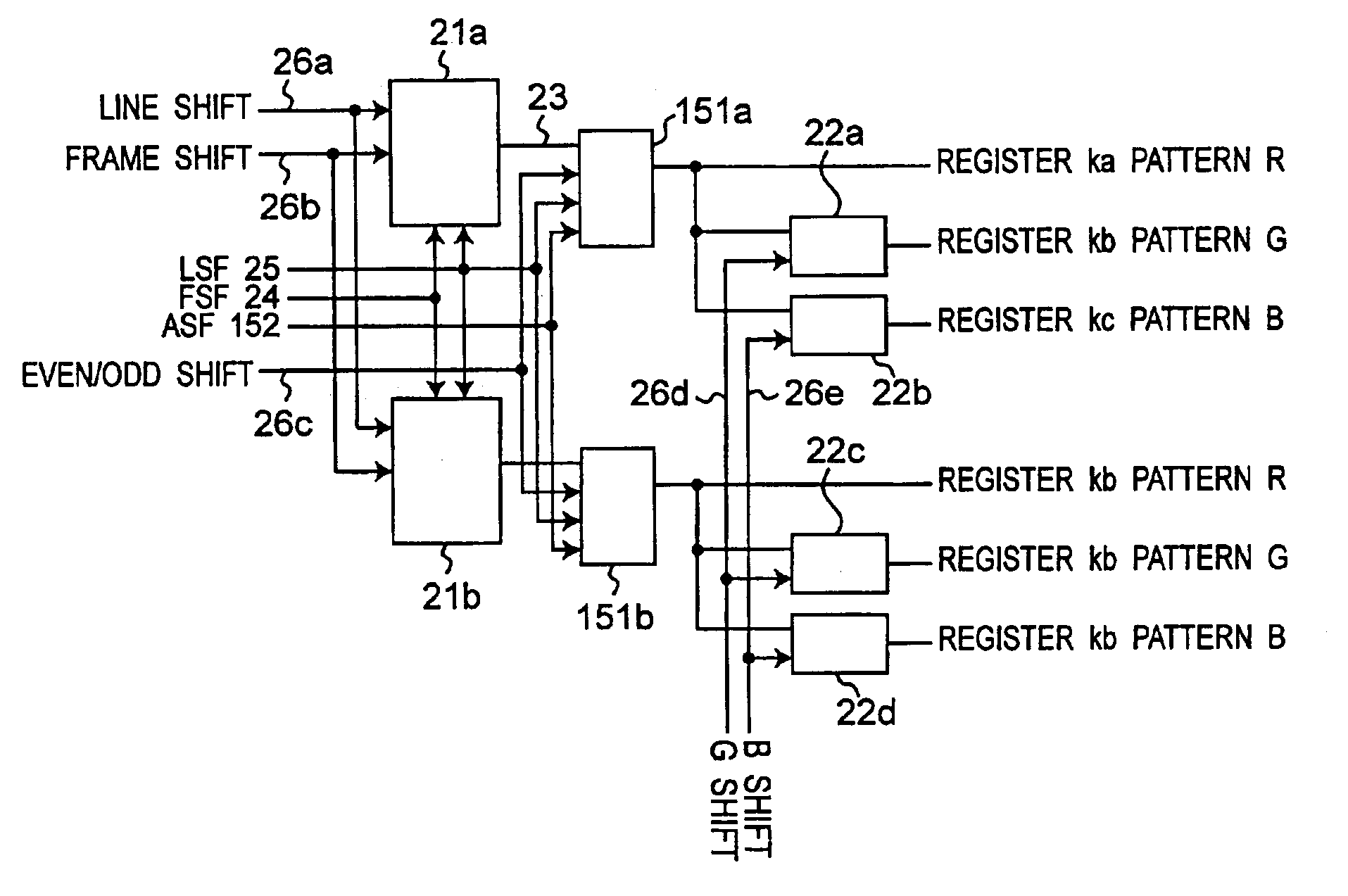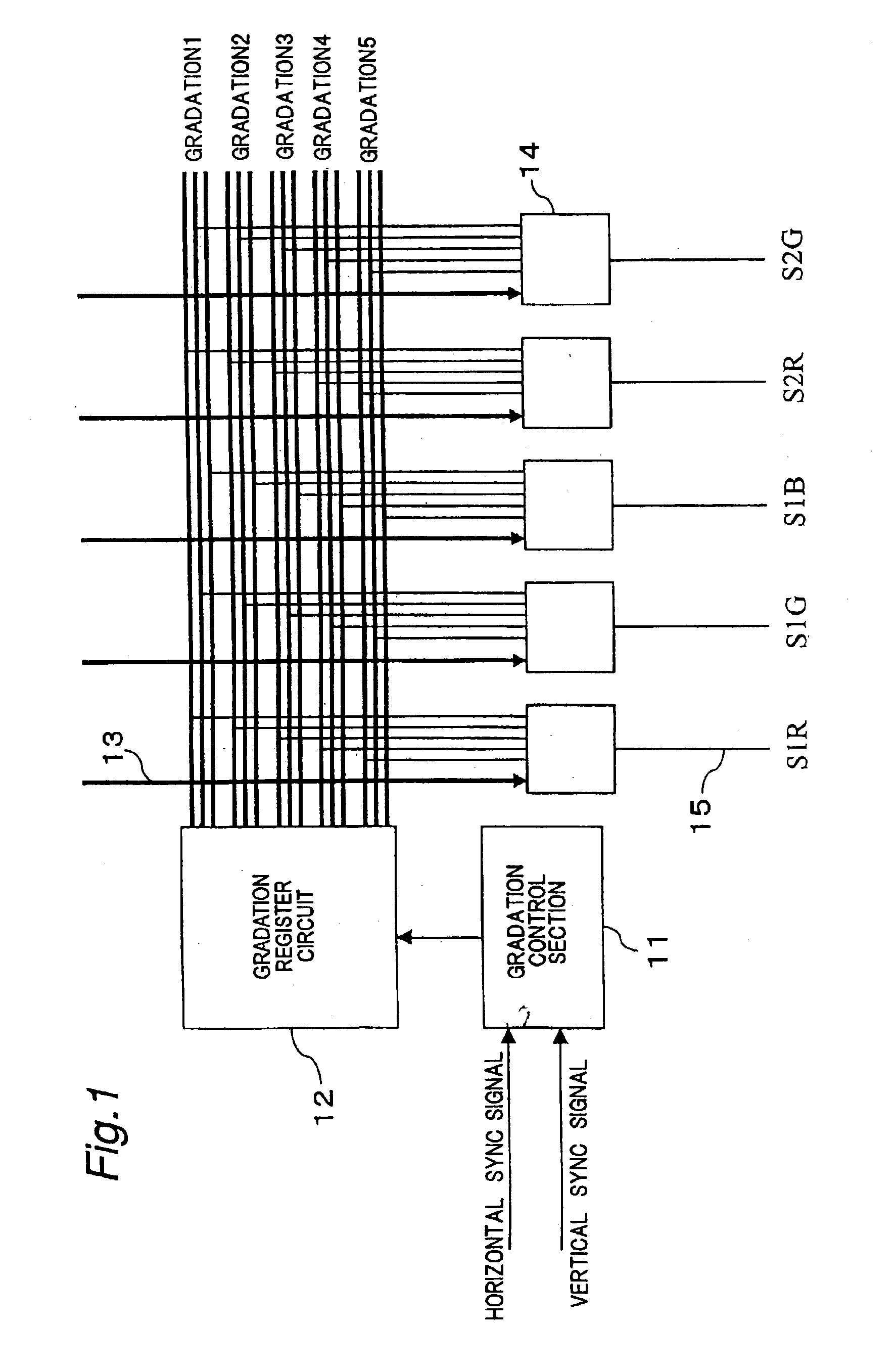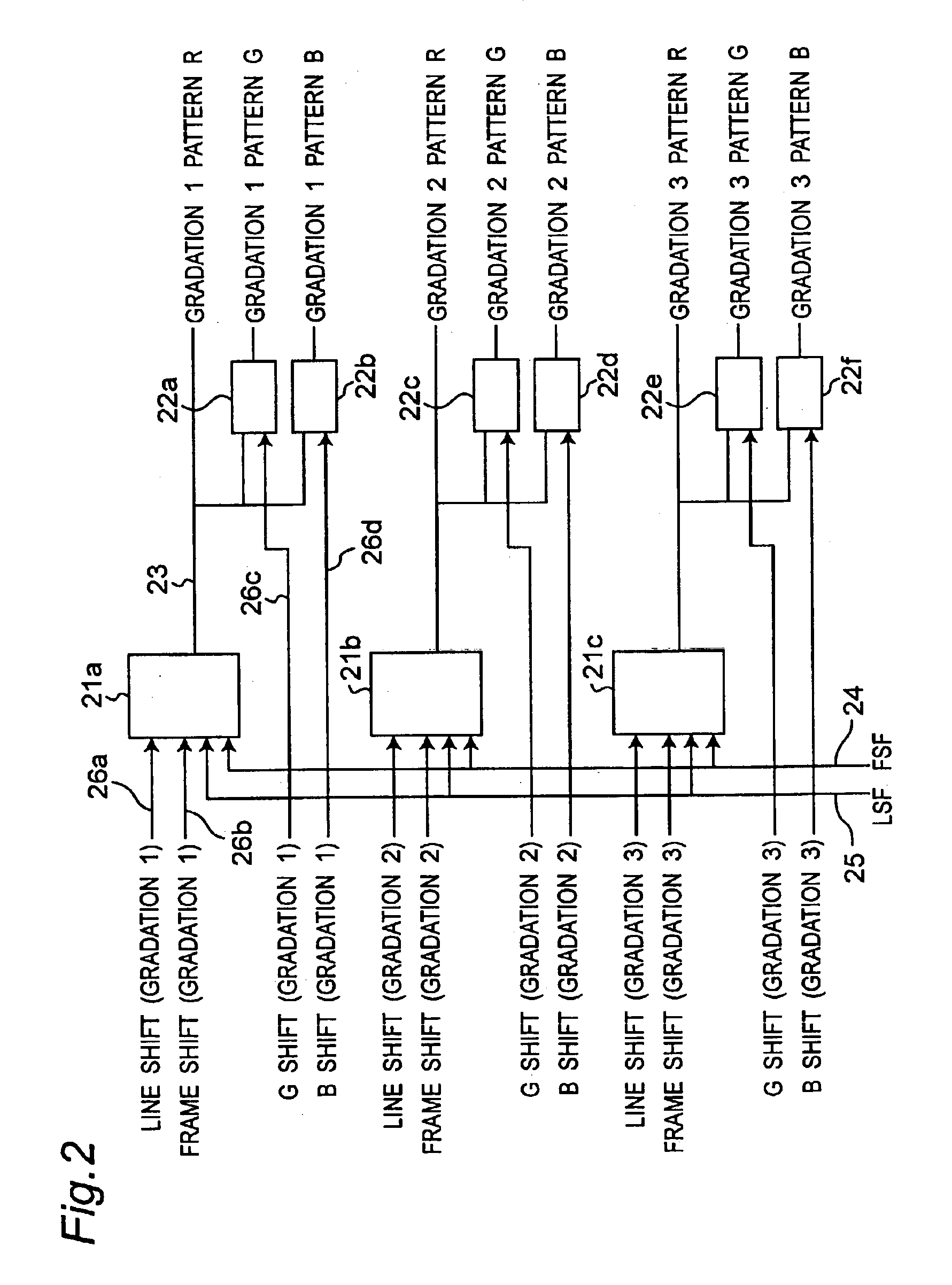Matrix display and its drive method
a technology of matrix display and drive method, applied in the field of matrix display and its drive method, can solve the problems of inability to reduce power consumption by frc, increase power consumption, limited power source, etc., and achieve the effect of adjusting brightness-to-gradation characteristics
- Summary
- Abstract
- Description
- Claims
- Application Information
AI Technical Summary
Benefits of technology
Problems solved by technology
Method used
Image
Examples
embodiment 1
[0080](Embodiment 1)
[0081]FIG. 1 shows a block diagram for outputting an ON or OFF signal to segment signal lines for performing a gradation display through a frame modulation (FRC) with respect to a video signal input 13.
[0082]12 is a gradation register circuit for outputting FRC data corresponding to each gradation, 14 is a gradation selection section, and 15 is a display data line. As shown in FIG. 2, the gradation register circuit 12 includes a gradation register section 21 (21a, 21b, 21c) which generates gradation pattern data 23 and a reference position changing section 22 (22a to 22f). That is, there are included registers which are different every gradation or every different ratios of ON and OFF frames, and the registers are shifted by bits given as a frame shift or line shift serving as a shift amount designation signal 26 which designates an amount of shifting the registers according to a frame shift control signal 24 or a line shift control signal 25 every frame or every...
embodiment 2
[0107](Embodiment 2)
[0108]In a simple matrix type liquid crystal display device, when performing a drive using a liquid crystal of a high-speed response characteristic for displaying a moving picture, there is a problem that contrast deterioration occurs due to a frame response.
[0109]As a method for solving this, a multi-line simultaneous selection method (Multi Line Selection Method: MLS) was proposed. In this method, common signal lines of multi lines (L rows) are simultaneously selected to apply a scanning voltage, and at the same time voltages in accordance with corresponding data are applied from the segment signal lines. This operation is performed until all of the common signal lines are selected, and further selection signals are applied at least L times from the common signal lines to one frame. Since the signals can be selected L times in one frame, it is possible to prevent the contrast from deterioration due to a frame response
[0110]In addition, in a conventional line-se...
embodiment 3
[0144](Embodiment 3)
[0145]FIG. 21 shows a method of performing a gradation display using FRC together with PWM (or PHM) referring to 6-bit signal.
[0146]As shown in FIG. 21(a), assuming that, with respect to the 6-bit input, the more significant 2 bits are FRC-processed and the less significant 4 bits are subjected to PWM or PHM, since the FRC process is performed with 2-bit data, the number of frames required for FRC is three frames. The number of frames having ON and OFF among this is determined by the 2-bit data, so that an ON / OFF pattern like three frames shown by 211 in FIG. 21(b) is obtained. Note that a shift process for reducing flickers is not considered here and only a rate of ON and OFF is described. In fact, the frames to be ON are different according to pixels.
[0147]Next, the less significant 4-bit data is outputted as it is using one frame (212 in FIG. 21(b)).
[0148]By this arrangement, since four ways of gradations due to difference of the FRC and further sixteen ways o...
PUM
 Login to View More
Login to View More Abstract
Description
Claims
Application Information
 Login to View More
Login to View More - R&D
- Intellectual Property
- Life Sciences
- Materials
- Tech Scout
- Unparalleled Data Quality
- Higher Quality Content
- 60% Fewer Hallucinations
Browse by: Latest US Patents, China's latest patents, Technical Efficacy Thesaurus, Application Domain, Technology Topic, Popular Technical Reports.
© 2025 PatSnap. All rights reserved.Legal|Privacy policy|Modern Slavery Act Transparency Statement|Sitemap|About US| Contact US: help@patsnap.com



